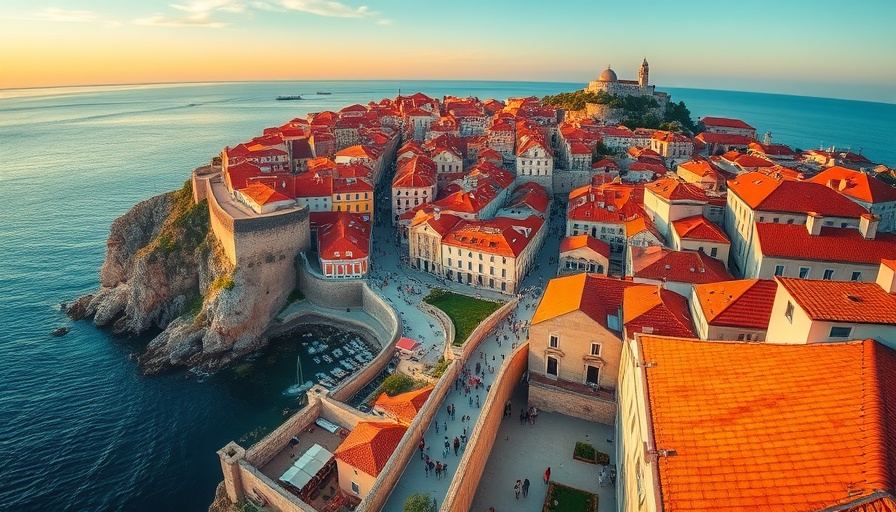
The Rise and Fall of Croatia's Tourism
In a stunning turn of events, Croatia, once boasting a vibrant tourism industry, has reported a significant downturn in visitor numbers this past July. Welcoming 4.6 million tourists, this figure represents a 2% decrease from the previous year, and both domestic and foreign tourism have felt the ripple effects. With tourists logging a total of 29.2 million overnight stays—down by 1%—the country faces fierce competition from other Mediterranean destinations.
Understanding the Global Trends Affecting Travel
The current landscape of tourism showcases a complex web of challenges affecting popular destinations. Economic uncertainties, rising travel costs, and shifting vacation patterns are just a few factors influencing traveler decisions. For Croatia, the modest gains from emerging markets like the US and UK weren't enough to offset the declines from established sources like Germany, Slovenia, and Austria.
The Mixed Bag of July's Results
Despite a commendable marketing strategy and the alluring charm of the Adriatic Sea, Croatia's tourism figures reveal a mixed bag of results. While foreign tourist numbers dipped slightly, an encouraging amount of overnight stays indicates a need for adaptive strategies in marketing and pricing. Moreover, the changing dynamics of travel highlight a shift in consumer preferences, demonstrating how crucial it is for destinations to remain flexible.
Learning from Other Destinations
Countries like Greece and Thailand, despite challenges of their own, maintain a steady stream of visitors. Their approach may offer valuable lessons for Croatia. Balancing target markets, enhancing digital engagement, and diversifying offerings could be pivotal in revitalizing interest in Croatian tourism. This adaptability will require cooperation between local businesses and tourism boards for effective strategy implementation.
A Forecast of the Future for Croatia’s Tourism
What lies ahead for Croatia as it navigates this slump? With engagement in sustainable tourism becoming more prominent, there is an opportunity to cultivate a unique brand that resonates with environmentally conscious travelers. Allies such as local wineries, hot springs, and vast natural parks could enhance travel packages tailored to unique experiences. Ensuring adaptability in marketing strategies and leveraging digital platforms may add value and forge connections with potential visitors.
Concluding Thoughts
The tourism industry is perennial, with cyclical trends that can change abruptly in response to global happenings. By implementing informed strategies and studying shifts in traveler behavior, Croatia can work toward reestablishing its foothold as a must-visit destination. As travelers become increasingly discerning, fostering sustainable practices and innovative marketing could very well usher in a new chapter for the Croatian tourism sector.
 Add Row
Add Row  Add
Add 




Write A Comment